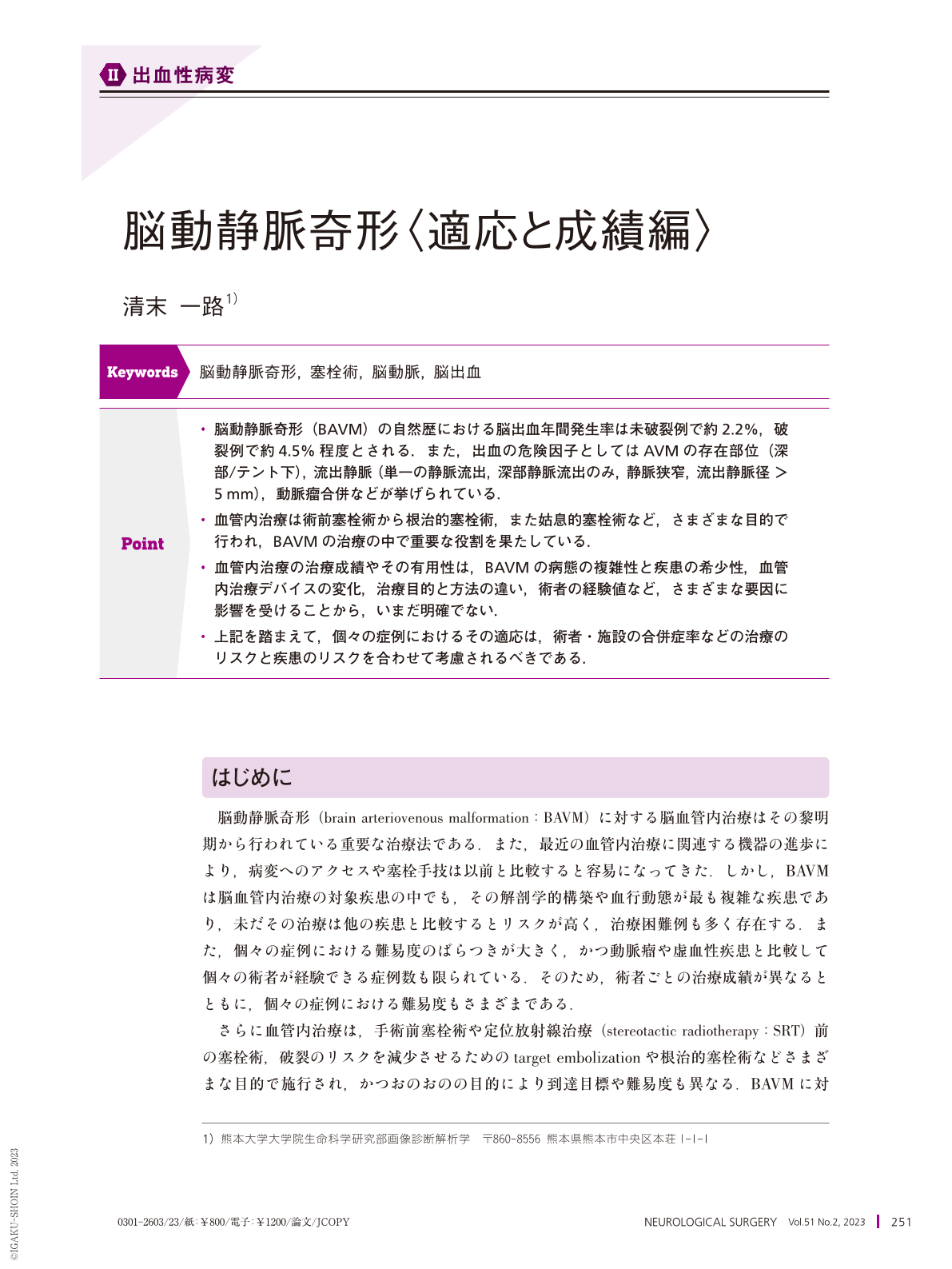Japanese
English
- 有料閲覧
- Abstract 文献概要
- 1ページ目 Look Inside
- 参考文献 Reference
Point
・脳動静脈奇形(BAVM)の自然歴における脳出血年間発生率は未破裂例で約2.2%,破裂例で約4.5%程度とされる.また,出血の危険因子としてはAVMの存在部位(深部/テント下),流出静脈(単一の静脈流出,深部静脈流出のみ,静脈狭窄,流出静脈径 > 5 mm),動脈瘤合併などが挙げられている.
・血管内治療は術前塞栓術から根治的塞栓術,また姑息的塞栓術など,さまざまな目的で行われ,BAVMの治療の中で重要な役割を果たしている.
・血管内治療の治療成績やその有用性は,BAVMの病態の複雑性と疾患の希少性,血管内治療デバイスの変化,治療目的と方法の違い,術者の経験値など,さまざまな要因に影響を受けることから,いまだ明確でない.
・上記を踏まえて,個々の症例におけるその適応は,術者・施設の合併症率などの治療のリスクと疾患のリスクを合わせて考慮されるべきである.
Brain arteriovenous malformations(BAVMs)are rare, but have a risk of serious intracranial hemorrhage in young adults. Endovascular treatment(EVT)has an important role in BAVM management with various purposes, including preoperative devascularization, volume reduction before stereotactic radiotherapy, curative embolization, and palliative embolization. In this article, the author reviews recent studies on EVT and relevant studies on BAVM management. Although no definitive evidences of utilizing EVT have been provided because of the various EVT outcomes depending upon various angioarchitectures, treatment goals, strategies, and physician's skills, EVT is certainly useful in selected cases. The role of EVT in BAVM management should be tailored to each patient while weighing the relative risks and benefits.

Copyright © 2023, Igaku-Shoin Ltd. All rights reserved.


